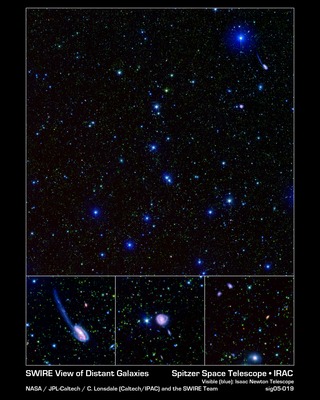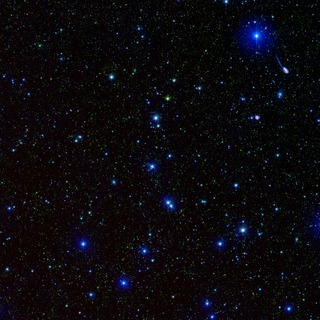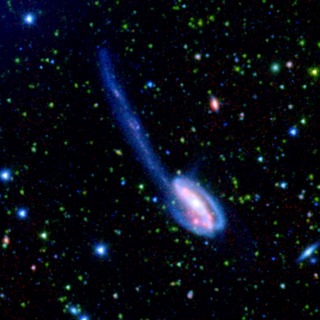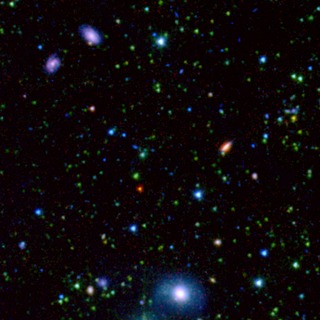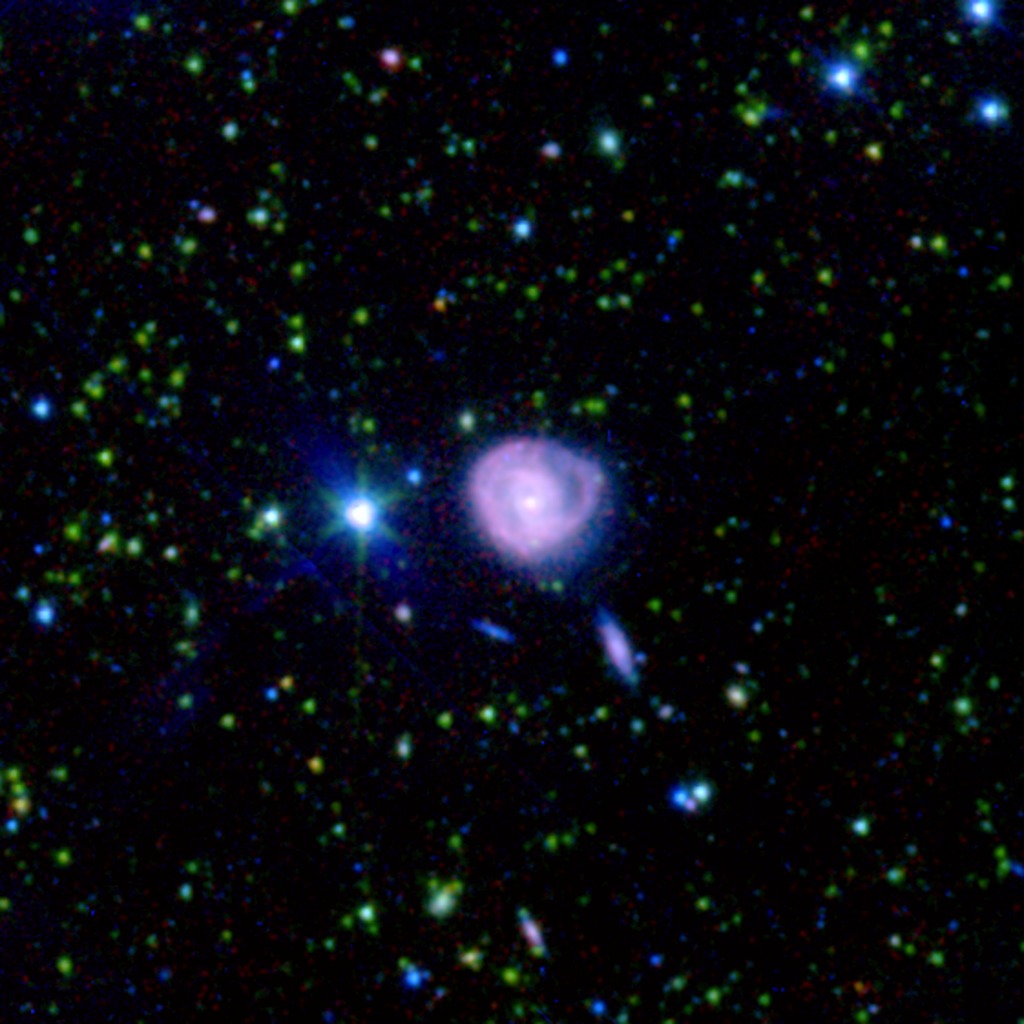
Credit: NASA/JPL-Caltech/C. Lonsdale (IPAC/Caltech) and the SWIRE Team
Observation • October 27th, 2005 • sig05-019c
sig05-019c
This spectacular infrared image, taken by the Spitzer Wide-area Infrared Extragalactic (SWIRE) Legacy project, encapsulates one of the primary objectives of the Spitzer mission: to connect the evolution of galaxies from the distant, or early, universe to the nearby, or present day, universe.
The picture is of an unusual ring-like galaxy called CGCG 275-022. The red spiral arms indicate that this galaxy is very dusty and perhaps undergoing intense star formation. The star-forming activity could have been initiated by a near head-on collision with another galaxy.
The observed SWIRE fields were chosen on the basis of being "empty" or as free as possible from the obscuring dust, gas, and stars of our own Milky Way. Because Earth is located within the Milky Way galaxy, there is always a screen of Milky Way objects blocking our view of the rest of the universe. In some places, our view of the larger universe is less obscured than others and for the most part is considered "empty." These are prime observing spots for astronomers interested in studying objects beyond the Milky Way.
The SWIRE image is a 3-channel color composite, where blue represents visible green light (light that would appear to be blue/green to the human eye), green captures 3.6 microns, and red represents emissions at 8 microns.
About the Object
- Name
- CGCG 275-022
- Type
- Galaxy > Type > Ring
- Galaxy > Activity > Starburst
Color Mapping
| Band | Wavelength | Telescope |
| Optical | 550 nm | |
| Infrared | 3.6 µm | Spitzer IRAC |
| Infrared | 8.0 µm | Spitzer IRAC |
Astrometrics
- Position (J2000)
- RA =16h 5m 49.2s
- Dec = 55° 16' 17.4"
- Field of View
- 0.0 x 0.0 arcminutes
- Orientation
- North is 316.0° left of vertical
